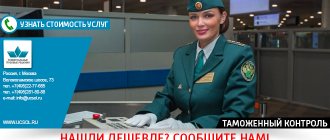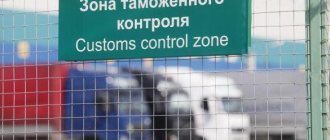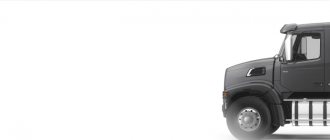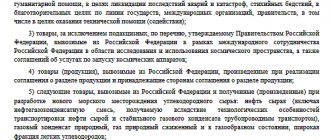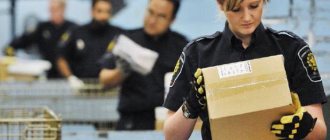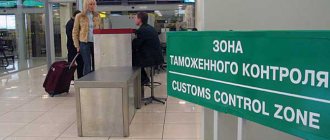Organizations and individual entrepreneurs specializing in foreign economic activity and already having some experience in this area are well aware that customs checks are carried out in various ways. The list of control measures is imperatively fixed within the framework of Art. 110. Chapter 16 of the Labor Code of the Customs Union and has twelve points, covering basic methods and principles, and fully revealing the set of actions performed by authorized employees. Let's take a closer look at the common forms of customs control that every businessman planning to import or export goods may encounter.
Request for explanations from foreign trade participants
The first and simplest option is aimed at obtaining information by officials that is significant from the point of view of performing the assigned task. Information is requested from carriers and declarants, as well as other persons knowledgeable about the nuances of particular interest to the departmental service. Material fixation involves the use of a standard template determined by the Commission. If an additional call is necessary, the purpose of which is to clarify controversial points in the submitted explanations, the authorized body may also send an official notification to the inspected person.
Verification of Authenticity and Trustworthiness
Features of the application of customs control forms provide for the mandatory establishment by officials of the compliance of the information or documentation received with their validity and standards. The list of tasks of each employee interacting with applicants includes:
- Clarification of information about recipients and carriers, goods and declarants.
- Assessing the correctness of filling out the fields of the declaration from the point of view of the instructions.
- Verification of details and validity periods of submitted documents.
This technique is characterized by a wide range of application possibilities, the presence of regulations that determine the procedure for implementing individual operations, as well as the right to a reasoned request for additional materials - but without increasing the release deadlines established by law.
Ready-made solutions for all areas
Stores
Mobility, accuracy and speed of counting goods on the sales floor and in the warehouse will allow you not to lose days of sales during inventory and when receiving goods.
To learn more
Warehouses
Speed up your warehouse employees' work with mobile automation. Eliminate errors in receiving, shipping, inventory and movement of goods forever.
To learn more
Marking
Mandatory labeling of goods is an opportunity for each organization to 100% exclude the acceptance of counterfeit goods into its warehouse and track the supply chain from the manufacturer.
To learn more
E-commerce
Speed, accuracy of acceptance and shipment of goods in the warehouse is the cornerstone in the E-commerce business. Start using modern, more efficient mobile tools.
To learn more
Institutions
Increase the accuracy of accounting for the organization’s property, the level of control over the safety and movement of each item. Mobile accounting will reduce the likelihood of theft and natural losses.
To learn more
Production
Increase the efficiency of your manufacturing enterprise by introducing mobile automation for inventory accounting.
To learn more
RFID
The first ready-made solution in Russia for tracking goods using RFID tags at each stage of the supply chain.
To learn more
EGAIS
Eliminate errors in comparing and reading excise duty stamps for alcoholic beverages using mobile accounting tools.
To learn more
Certification for partners
Obtaining certified Cleverence partner status will allow your company to reach a new level of problem solving at your clients’ enterprises.
To learn more
Inventory
Use modern mobile tools to carry out product inventory. Increase the speed and accuracy of your business process.
To learn more
Mobile automation
Use modern mobile tools to account for goods and fixed assets in your enterprise. Completely abandon accounting “on paper”.
Learn more Show all automation solutions
Requirements for special clothing
First of all, the word “uniform” means “same,” therefore customs officers are required to wear uniform clothing , which has its own style, cut, and color scheme.
The fabric and style of special work clothing should create a uniform look for the entire corporate group of employees. It is the main symbol of the fact that this or that person belongs to a certain state organization.
The uniform of Russian customs officers looks like in the photo:
In the history of clothing cutting, there are dozens of different methods of how it was designed. The customs uniform is quite simple , it has:
- simple tailoring and cutting;
- shoulder straps;
- stars are sewn on the shoulder straps in the required quantity;
- dark green, blue colors;
- symbols of the Russian Federation (flag, etc.).
Only practical and durable things were invented for each government employee . After all, they wear tunics (shirts) every day, and the latter, in turn, tend to wear out.
All of them have pockets so that a person can simply put a pen and a small notepad there. He also has the right to put his own (personal) things in his pocket (a mobile device, if necessary for service, or a handkerchief, napkins, etc.).
Inspection of goods and transport
To assess the condition of transported objects, customs control is carried out in the form of an external visual inspection, carried out in relation to vehicles, cargo containers and even the luggage of individuals. The priority task in this case is to assess the condition of seals and seals, as well as other identification markers placed on the packaging and confirming the integrity of the cargo. The characteristic features of this method are:
- Maintaining the intact condition of packaging and control indicators.
- There is no need for the mandatory participation of the declarant.
- Possibility of application without formal grounds.
- Availability of requirements for filling out an act or protocol - in situations where the results obtained are planned to be used in other activities.
The listed forms, types, measures and procedures for carrying out customs control are legal norms, and their application, as a rule, does not give rise to legal disputes. First of all, due to the lack of direct intervention in the condition of transported goods. But the next method usually causes more dissatisfaction among exporters - even in situations where the reasons for its implementation are obvious.
Inspection of goods and transport at customs
Despite the similarity of the wording used, specifically in this case we are talking about procedures associated with opening product packaging, containers, containers and cargo spaces, inside of which it is possible to find products that do not correspond to the declared identifiers and documents. This is one of the main forms of customs control, the legal regulation of which has been worked out very carefully - both within the framework of the domestic legislative framework and in the provisions of the Customs Union.
The list of basic principles that must be observed during the organization and implementation of an inspection includes:
- Eliminating the possibility of unlawful harm to entities transporting goods or vehicles across the border.
- Mandatory recording of the results obtained using a report that corresponds to a standard template.
- Availability of grounds for responsible authorized employees to speak about the need to order an additional check of this kind.
In accordance with the generally accepted classification, the following criteria are used to separate existing forms of inspection:
- The specifics of the object to be studied are commodity and transport procedures.
- The stated reason is the main, repeated, or identification operation.
- The depth of the examination is partial, with recalculation, with opening of packaging, etc.
Most of the regulations governing the method in question relate to the structure of the national legal system, and define the rights and responsibilities of all participants involved. Thus, officials carrying out the inspection task are obliged to:
- Promptly notify the designated entity acting as a declarant or having authority in relation to the transported cargo about the place and timing of the inspection.
- Provide persons, including those representing the interests of the owner, with a second copy of the act drawn up based on the results of the event - both in person and with the help of the postal service.
- If the declaring participant in foreign economic activity is absent during the procedure, involve at least two independent witnesses who can confirm the completion of each action reflected in the protocol.
The list of rights granted by the legislator to official representatives includes:
- Organization and conduct of inspection at customs, regardless of the location of the persons responsible for declaration or having the authority to accompany commercial products, in situations determined by the provisions of paragraph 5 of Article 116 of the Customs Code of the Customs Union.
- The requirement from citizens with the specified status to participate in the process, including providing active assistance that simplifies the implementation of the planned actions.
In turn, the right of foreign trade participants is:
- Familiarization with information about the timing and location of the inspection.
- Showing initiative in personal presence.
- Obtaining a copy of the act drawn up in accordance with the standard form (decision No. 260 of 2010) and signed by the responsible person.
Responsibilities include personal participation, as well as assistance to employees of departmental services, provided on the basis of the stated requirement.
How to properly care
Processes related to washing, storing, ironing uniforms of customs officers are among the most important methods of care. So, if you follow all sanitary standards and rules , they will not have to be changed, bought, thrown away, etc. often. work uniform.
Since the uniform is made of wool blend fabric, when throwing it into the washing machine, you need to select the necessary “ Wool ” mode. The iron, accordingly, has the same function, so in order to smooth it out well, you just need to use it.
Do not be afraid to use an iron with steam , because steam will best smooth out the most wrinkled areas of the product. It is better to store clothes on a hanger, first by hanging them by the hooks sewn inside.
It is best to hang a jacket, tunic
In principle, there is nothing difficult about caring for this type of clothing. You just have to stick to the functionality of your home electrical appliances . If you don’t have a washing machine, you can wash the uniform by hand, starting with the cuffs, collar and the most contaminated areas.
Today, customs officers wear quite beautiful and high-quality uniforms created in the European style. All employees are very pleased with the uniform and feel comfortable in it. The state has tried to develop a uniform that is of high quality, stylish and reliable, meeting all European standards.
Personal customs inspection
An exceptional method applied to individuals in situations where customs officials have reason to suspect that entities crossing territorial borders are deliberately concealing goods transported in violation of current legislation. From a legal point of view, this is one of the most carefully regulated procedures, since it actually affects the fundamental constitutional right of an individual to the integrity of the person.
Factors that serve as reasons for applying this type of control by customs authorities include:
- Information about hidden objects.
- Information confirming the fact of transfer of items from the main territory to the transit territory, or in the opposite direction.
- Operational reports notifying about planned illegal shipments related to the transportation of goods withdrawn from free circulation.
The right to make a final decision remains with the head of the body (in case of absence, with his immediate deputy), and is exercised in writing: through the preparation of a separate act, or by imposing a resolution on the incoming report.
Types of models for men and women
Not only the male half of humanity has the right to serve in the Customs authorities. The legislation of the Russian Federation allows women to enter this service . Thus, everyone needs to adhere to the rules at work and wear the appropriate uniform, which has a number of differences.
For men, this uniform consists of a jacket and trousers. There must be a jacket . a tie must be worn . The suit should be made from wool blend fabric materials, which have a number of useful properties.
For example, such suits are easy to take off and put on, do not wrinkle much and allow you to maintain the shape of the cut of the product. If it is raining or snowing outside, the fabric will easily protect you from cold temperatures and will not immediately get wet.
The men's jacket has a zipper at the front, so it can be unfastened and fastened very quickly . There are four convenient sewn pockets, two of which can be fastened with a button, and two of them are side and mortise. To secure the shoulder straps , special so-called “loop loops” are sewn directly onto the shoulders.
As for the trousers, they are also well thought out. A zipper is sewn onto the middle seam. Additional elements include: side piping, side seams, pockets with inclined entrances, welt pockets and with figured flaps and a button at the back.
Women's uniform storage is very simple:
- skirt and jacket - dark blue colors;
- the jacket has a central fastener with several buttons, a laid-back collar and lapels, which are sewn on with sleeves with piping at the bottom, embroidered with figured flaps and side pockets;
- on the back of the jacket there is a middle seam and a vent, it comes in a semi-fitted style, so it will look very beautiful on a female figure;
- the design of the skirt is specially designed in the form of a stitched belt with sewn-in inserts with elastic braid on both sides;
- The skirt has a zip fastening with a braid at the back.
The advantage of women's customs officer clothing is that it is made from wool-blend fabric materials. Thanks to this, the suit looks quite good and will slowly get wet when it rains.
The high elasticity of the fabric material, its wrinkle resistance and warm protective properties are actually a very big plus.
Methods of implementing customs control: inspection of premises and territories
Another technique that aims to confirm the actual availability of commercial products subject to mandatory accounting. It is carried out at intermediate storage sites, warehouses, and duty-free stores. Other locations are also checked where goods may be under the supervision of persons responsible for temporary escort as part of the basic procedures related to declaration.
The rules governing the conduct of routine or special inspections include the following provisions:
- Inspection of premises assigned to entities providing services in the field of customs is allowed, including storage areas for goods subject to control.
- Actions in one way or another connected with intrusion into the territory of residential private property are excluded.
- The expediency is determined by the head of the departmental unit, or his deputy - with the exception of cases when it comes to off-site events, where a similar task is assigned to the head of the commission.
- Written execution of the decision made involves drawing up an appropriate order in the format established by the regulations of the Federal Customs Service of the Russian Federation.
- The results obtained from the implementation of verification actions are recorded using a report, the standard procedure for filling which is approved by the EEC.
Based on the provisions established within the framework of the Federal Customs Service Order No. 578, which came into force in 2011, when conducting an inspection of premises and territories, responsible persons have the right to:
- Cross the boundaries of the operation area, including suppressing possible resistance, as well as using means to open blocked objects - but only in the presence of two witnesses involved.
- Make demands on citizens who have certain authority over the goods, or their official representatives, to provide products for inspection.
- Involve in planned activities experts and specialists with the qualifications necessary to solve specific problems.
The list of responsibilities of authorized employees includes:
- Compliance with the deadlines allotted for the inspection - one day in the standard mode, and no more than three - when determining special grounds.
- Entering into the official act information obtained during the implementation of the procedure, as well as explanations provided by the parties involved.
- Careful handling of products and premises to prevent any unlawful harm.
- Ensuring confidentiality of information that is a state or other secret protected by law.
In addition, representatives of the control agency are obliged to respect the rights and legitimate interests of citizens who are in one way or another connected with the goods declared and subject to accounting, as well as owners or tenants of premises, witnesses, and other participants.
Purpose
Customs officers are engaged not only in analytical work, but are also involved in the country’s personal security systems . Everyone must adhere to a strict working regime and regulations:
- work according to a specific set schedule;
- at the workplace, be appropriately dressed - in a uniform;
- perform their functional duties during working hours;
- fulfill other important points and points.
The first officially recognized uniform in Russia was approved in 1827 .
Then the Regulation was signed stating that officials must wear special clothing. After the revolution of 1917, the form began to change slightly, but at the same time retained all the traditional symbols.
Once again, the state authorities decided to change the uniform of customs officers only in 1998 . This was done due to the fact that a new federal regulatory act on customs authorities was adopted. Only after this were the so-called “epaulets” introduced (we can see them right on the shoulders of employees while on duty), which were distinguished by special ranks.
Modern clothing is more similar to what was first used in 1827. This question still remains open today.
